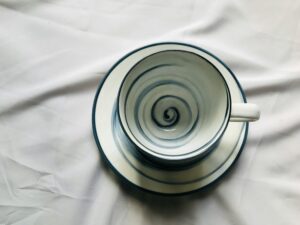Coffee and chocolate are two of the world’s most beloved indulgences. They share more in common than most people realize—both are cultivated in tropical regions, undergo fermentation and roasting, and develop their flavors through similar chemical reactions. When brought together, coffee and chocolate create a pairing that is as complex as it is comforting. But pairing them well requires more than just grabbing any chocolate bar with your morning cup. To truly enjoy them like a pro, you need to understand their origins, flavor profiles, intensity levels, and how they can complement or contrast one another.
Table of Contents
This in-depth guide explores how to pair coffee with chocolate in 2025, giving you expert tips, detailed pairing examples, and practical advice on how to savor both together. By the end, you’ll be able to create flavor combinations that rival those found in artisan cafes and specialty chocolate tastings.
Why Coffee and Chocolate Work So Well Together
Both coffee and chocolate contain natural compounds that contribute to bitterness, sweetness, and complexity. They are also rich in polyphenols and antioxidants, which enhance depth of flavor. Because they share these compounds, their flavors often overlap, which is why they feel so naturally complementary.
Another key similarity is their origin and processing. Just like coffee beans, cacao beans go through fermentation, drying, and roasting, which helps bring out flavors ranging from fruity and floral to nutty, smoky, or earthy. This shared journey creates a natural harmony between the two.
But harmony doesn’t mean they always taste best when simply combined. Sometimes, contrasting flavors create a more dynamic pairing than similar ones. That’s why it’s important to understand intensity, texture, and balance when pairing coffee with chocolate.
The Principles of Coffee and Chocolate Pairing
Match Intensity Levels
The first rule of pairing is balance. A strong espresso will overwhelm a sweet milk chocolate, while a delicate light roast coffee may get lost against a bold 90% dark chocolate. Always match strong with strong and light with light.
Complement or Contrast
You can either match flavor notes (nutty coffee with nutty chocolate) or highlight differences (fruity coffee with creamy white chocolate). Complementary pairings feel smooth and cohesive, while contrasting ones are bold and exciting.
Consider Texture
Chocolate’s mouthfeel can transform a coffee pairing. A silky milk chocolate softens bitter espresso, while crunchy dark chocolate with inclusions like nuts or cocoa nibs pairs beautifully with a smooth medium roast.
Temperature Matters
Coffee should be warm but not scalding when paired with chocolate. Too hot, and it melts chocolate too fast, muting its flavors. Cold brew or iced coffee, on the other hand, can highlight creaminess in sweeter chocolates.
Coffee and Chocolate Pairing Chart
Here’s a guide to some tried-and-true pairings:
- Dark Roast Coffee (Sumatra, French Roast) → Pairs with 70–90% dark chocolate for deep, earthy harmony.
- Medium Roast Coffee (Colombian, Brazilian) → Balances with creamy milk chocolate or hazelnut chocolate.
- Light Roast Coffee (Ethiopian, Kenyan) → Enhances fruity or citrus-infused chocolates, such as raspberry or orange dark chocolate.
- Espresso → Best with salted caramel or chili chocolate for bold, layered flavor.
- Cold Brew → Refreshing with white chocolate or cookies & cream chocolate.
- Flavored Coffee (vanilla, hazelnut, mocha) → Works well with chocolate containing nuts, caramel, or spices.
Pairing by Coffee Origins
Latin American Coffees (Colombia, Brazil, Costa Rica)
Latin American coffees are often nutty, chocolatey, and well-balanced, making them perfect for pairing with milk chocolate, nut-filled chocolate, or caramel-infused varieties. A Colombian coffee with almond-studded milk chocolate creates a comforting and classic flavor pairing.
African Coffees (Ethiopia, Kenya, Rwanda)
African coffees often have bright acidity and fruity notes. They pair beautifully with berry-flavored or citrus-infused chocolates. An Ethiopian Yirgacheffe with raspberry dark chocolate highlights red fruit notes, while a Kenyan coffee with orange chocolate creates a refreshing zing.
Asian Coffees (Sumatra, Java, Vietnam)
Coffees from Asia tend to be earthy, smoky, and full-bodied. These pair best with high-cacao chocolates (80% or more) or chocolates with spices like cinnamon, ginger, or chili. A Sumatra coffee with 85% dark chocolate delivers an intense, bold pairing for adventurous palates.
Popular Pairing Styles
Classic Pairing: Dark Chocolate and Dark Roast
This combination is timeless and indulgent. Both are strong, bold, and full of roasted depth, creating harmony without surprises.
Playful Pairing: White Chocolate and Cold Brew
White chocolate is creamy and sweet, while cold brew is smooth and low-acid. Together, they feel refreshing yet decadent—ideal for warm weather.
Adventurous Pairing: Espresso and Chili Chocolate
Espresso’s boldness combined with chili chocolate’s spicy kick creates an intense experience that lingers long after the last bite.
Comfort Pairing: Medium Roast and Caramel Chocolate
A nutty medium roast balances caramel’s sweetness while highlighting chocolate’s creaminess. This pairing is comforting, warm, and familiar.
Hosting a Coffee and Chocolate Tasting
If you want to explore pairings like a pro, host a tasting session at home. Select three to four types of chocolate (milk, dark, white, and one with fruit or nuts) and pair them with different coffee brewing methods (espresso, pour-over, cold brew).
Encourage tasters to:
- Smell both coffee and chocolate before tasting.
- Take a sip of coffee, then a small bite of chocolate.
- Allow chocolate to melt on the tongue, then sip coffee again.
- Discuss what flavors emerge—sweet, bitter, fruity, or nutty.
This mindful tasting approach allows you to notice subtle flavor shifts that make pairing so rewarding.
Pro Tips for Perfect Pairings
- Always choose high-quality coffee and chocolate—single-origin beans and bean-to-bar chocolate provide the most distinct flavor notes.
- Take notes during tastings to identify which pairings work best for you.
- Don’t overlook inclusions like nuts, sea salt, or dried fruits in chocolate—they can highlight hidden notes in coffee.
- Experiment with different brewing methods—espresso, French press, AeroPress, and cold brew all bring out unique characteristics.
Final Thoughts
Pairing coffee and chocolate is more than a delicious indulgence—it’s a journey through flavors, cultures, and craftsmanship. By understanding intensity, flavor profiles, and balance, you can elevate your experience from casual snacking to professional-level tasting. Whether you love a classic dark roast with high-cacao chocolate, or a playful cold brew with white chocolate, the possibilities are endless.
So next time you brew a cup of coffee, don’t just grab any chocolate bar. Choose thoughtfully, savor slowly, and enjoy the complex harmony that only coffee and chocolate together can offer.






